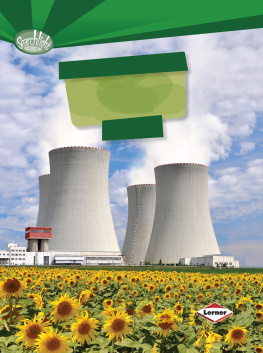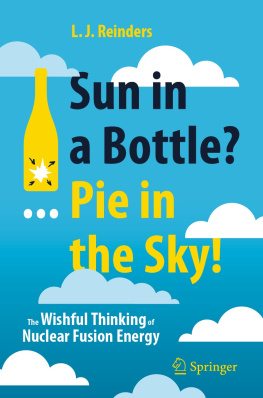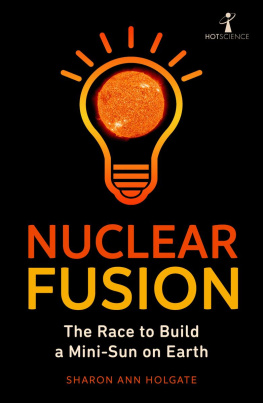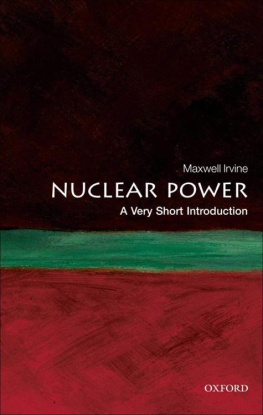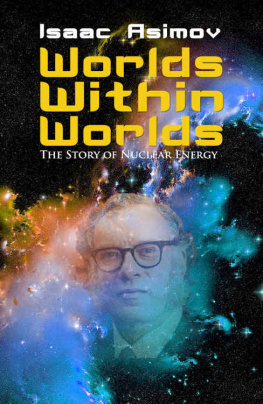Energy, Cold Fusion, and Antigravity
By
Frank Znidarsic P.E.
ISBN 9781-48027-0237
Revised 2/2019
Copyright 2012 Frank Znidarsic
No bulk reproduction without written permission.
Limited copying for personal use is permitted.
Table of Contents
INTRODUCTION
Thank you for purchasing Energy, Cold Fusion, and Antigravity. There are two schools of thought as to where we are heading. The first school of thought, as foreseen by climate scientist James Lovelock, predicts that we are rapidly heading towards a global catastrophe. The disaster will be triggered by the triple whammy of climate change, population increase, and the depletion of the fossil fuels. Lovelocks Gaia Hypothesis predicts that it is already too late. According to Lovelock, within this century, the only places on Earth that will be inhabitable will be at the poles. He advises, Enjoy life now while you can! Taking history as a guide, about 55 million years ago the Artic was a subtropical paradise and the tropics were too hot for most life. This period, the Paleocene-Eocene Thermal Maximum, arose after massive quantities of greenhouse gasses spewed out of volcanoes. The greenhouse gases emitted by the use of fossil fuels may be rapidly turning the earths climate, once again, into a hothouse. The great intensity of some recent hurricanes may be a harbinger of the things that are to come.
The second school of thought, as foreseen by Peter Diamandis, predicts that we are heading into an age of abundance. This age will be ushered in by a rapid increase in the capabilities of computer and medical technologies. Fred Pearce in his book, The Coming Population Crash , has revealed that societies that respect a womans rights and provide for child care tend to maintain stable populations. Indeed the dire predictions presented by Paul Ehrlich, in his 1968 book, The Population Bomb , did not come to pass.
Frank Znidarsic believes that the age of abundance can be acquired through the development of new, non-polluting, and abundant energy sources. The harnessing of the electromagnetic force has propelled us into this current age of wonder. New technology could classically harness all of the natural forces. These technologies will produce an abundance of clean energy. New propulsion technologies will efficiently propel spacecraft. These craft will provide resources from beyond the bounds of Earth. These technologies will propel us to the stars and lead us to the abundance of Peter Diamandis singularity. Energy, Cold Fusion, and Antigravity places these technologies in a historical context. It goes on to describe the science behind a technology that will control all of the natural forces. The development of these techniques will expedite the coming of the next technological revolution.
CHAPTER 1 Energy
The discovery of fire by ancient man, over 20,000 years ago, was a great achievement. Fire cooked his food and killed the parasites that afflicted him. He used fire, along with his new friend, the dog, to ward off predators. The carbon dioxide emitted by these fires may have led to a warmer and more habitual period. Bronze was first used to contain pressurized steam. In the 1st century AD, Hero of Alexandria invented the aeoliphile; a steam powered pinwheel. The aeoliphile demonstrated the potential of steam power; however, did not produce enough power to do any useful work. Higher pressure boilers came with the development of iron. In the 18 th Century, James Watt invented his steam engine. In 1803, Robert Fulton demonstrated the first piston powered steam ship. Charles Parsons invented the modern steam turbine in 1884. Parsons turbine converted large quantities of high pressure steam into mechanical power. The British navy was presenting before Queen Victorias in the 1897 Diamond Jubilee. Parsons ship, the Turbinia, blew past the Royal Navy at a speed of over 34 knots. The Turbinia easily evaded a picket ship that attempted to catch it.
In 1824, Nicolas Lonard Sadi Carnot published the first theoretical understanding of steam power in his work; Reflections on the Motive Power of Fire . Maxwell Boltzmann, extended Carnots work, and linked the power of steam to the motion of molecules. Boltzmanns analysis presented some of the first theoretical evidence for the existence of molecules. Unfortunately Boltzmann was ahead of his time and the established scientists did not accept his ideas. Boltzmann committed suicide out of sickness and frustration. Steam power, according to Carnot and Boltzmann, was much like water power. The water pressure between the inlet and outlet of a water turbine corresponds to the temperature difference between the source and sink of a thermal engine. The temperature difference sets a theoretical bound to the efficiency of all heat engines.

The pressures and the temperatures of steam boilers were increased as steel replaced iron and as welding replaced rivets. The increase in efficiency reached a climax in the 1960s. Temperatures of over 1000 degrees Fahrenheit were reached. At this temperature boilers convert 9500 BTUs of heat into one kilowatt-hour of electricity. The thermal efficiency of these units is about 35%. Pressures of three thousand pounds per square inch are needed to confine the hot steam. At this pressure the weight of steam equals the weight of water. Water no longer boils. The non-boiling liquid carries dissolved solids and minerals onto the turbine. The life expectancy of alloy steel diminishes at these high temperatures. The temperature, of the latest generation of boilers, has been cut back a bit in order to reduce material costs and increase reliability. Steam power still generates the bulk of our electrical energy.
Coal
The combustion of wood and coal supplied the energy of the steam power. Coal still accounts for the bulk (about 50%) of U.S., electrical generation. My grandfather came through Ellis Island in 1916. The entry document says he was a coal miner. He came from a farm and knew nothing about mining. Coal was needed to power the industrial expansion of the time. I was told stories. The men were paid commission on the coal they loaded. If the boss did not like you; he would give you a job cleaning up rock. There was no pay for the loading of rock. My father followed, in my grandfathers footsteps, and advanced to the position of a mine fire boss. In his time, machinery was beginning to be used in the mines. The operation of large, high powered machines, within the tight quarters of low Pennsylvania coal, was dangerous. This high powered machinery stirred up quite a bit of dust. My father suffered with black lung when he retired. I was the first in the family to attend college. I graduated with degree in Electrical Engineering in 1975.
I was told to get a job with a big mining company. Perhaps I would work mostly on the surface. This I did, and the pay was good. I was in the mine for a first time in Windber PA in the late 1970s. The mine was low and the miners crawled to a place to have lunch. I am tall, the roof was low, and I could not sit up straight. I tried to drink coffee out of my thermos. The coffee ran down the side of my face. I spied a high spot about 10 feet away. I thought, Those lazy, non-educated coal miners will not even bother to move to a better location. I took it upon myself and moved to the decent high place for lunch. Thats when one of them asked, Found a nice high spot son! Do you know why it is high? I responded, It must have been dug out for some reason or another. He replied, Thats where the rocks keep falling! I crawled back under the low spot with the rest of the miners. I quickly learned to respect the knowledge of the experienced workers. Mining was hard, dirty work. I knew then that it was not stuck, by my heritage, into in my blood.
Next page

